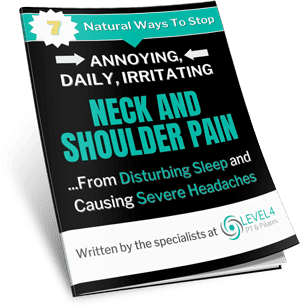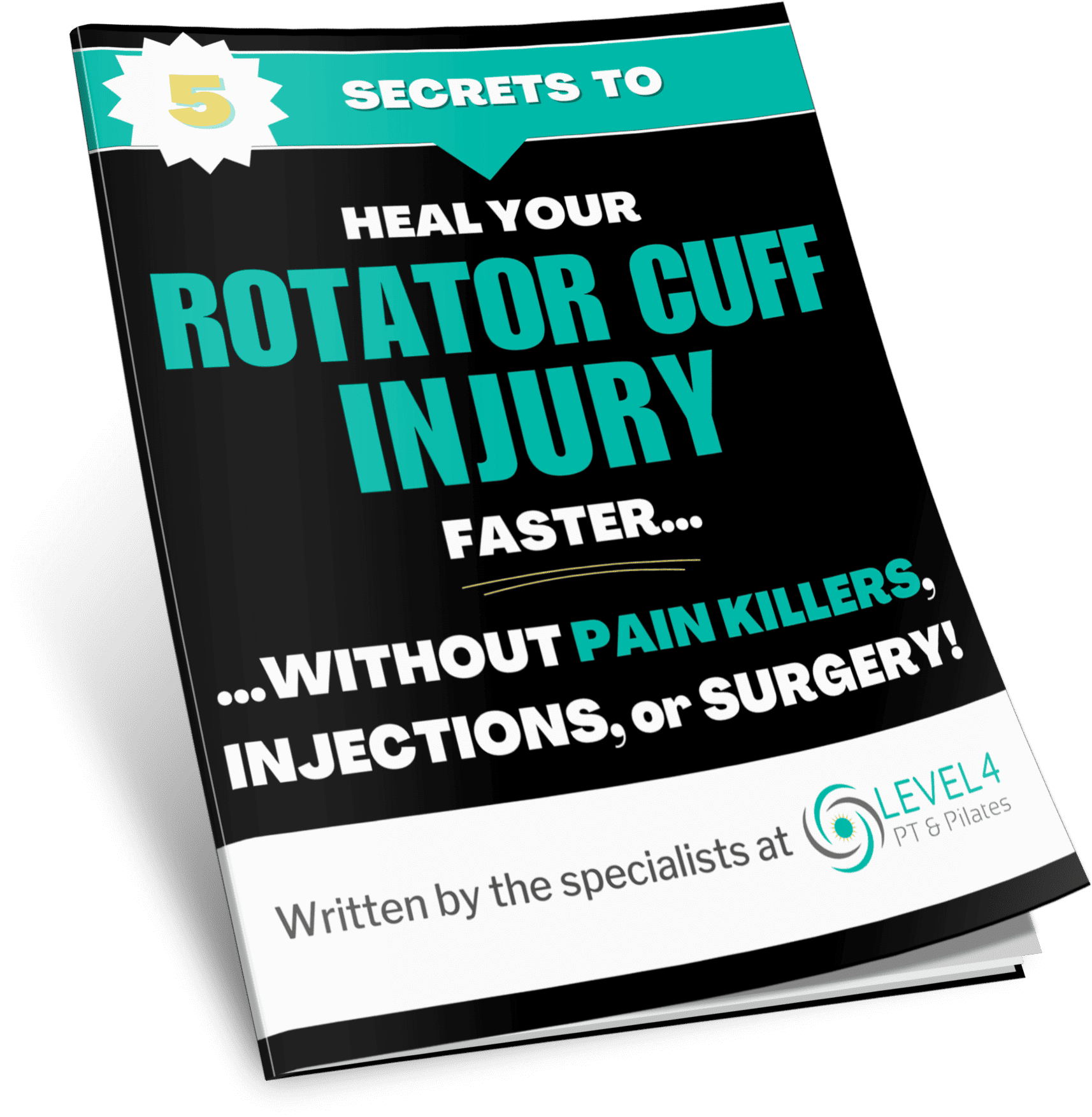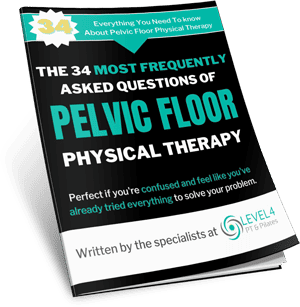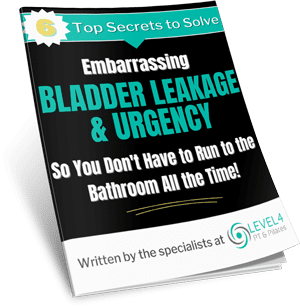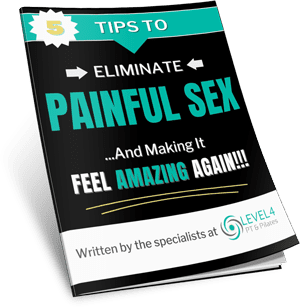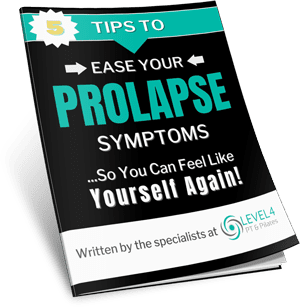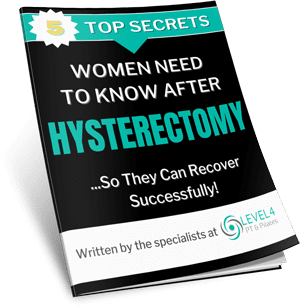
Let’s answer a pressing question which a new client recently emailed in asking for the answer to:
“Dr. Dawn, I am now 8 weeks post total hysterectomy and my doctor has released to begin exercising except I would like to know what exercises should I not be doing after my hysterectomy?”
– Hayley, 62, Carlsbad, CA
I love this question because it already answers the first two out of three questions I ask all of my clients:
- “How many weeks post hysterectomy are you?
- “Has your surgeon given you the okay to begin exercising again?”
But the question still doesn’t answer my third and very important question
3. “What type of hysterectomy did you have?”
This is very important to know because the type of hysterectomy determines what type of exercises you can perform but more importantly NOT do.
So, if you are not one of my clients and you are reading this blog on the internet, it is extremely important to know that first and foremost you need to follow your doctor’s directions. That supersedes anything I am going to say in this blog write up to help answer Hayley’s specific question because I do not know what type of surgery you may have had.
I do not know if you may have had a laparoscopy, had an abdominal incision, you might have had prolapse repairs with it, your age can effect it, and so many other different factors so I am going to give you general guidelines but again whatever your doctor or surgeon has said is going to supersede that and you can always take these guidelines to them and say, “Is this okay?”
All right!… so just remember that.
Your experience may be a little bit different and therefore I am going to give guidelines for a general hysterectomy that was possibly vaginal or even done by laparoscopy.
So that is what I will talk about today but I will give some modifications for possible abdominal incisions as well as prolapse repairs that might have come with it.
Also know that I am a Women’s Health and Pelvic Floor Physical Therapist but I may not be your specific Physical Therapist so again, you have to put all this into account with your specific situation.
Many women from all over the world do come to me for a virtual consultation and have had great success. We talk about a specific plan or your specific questions so if you are interested in learning more about that service you can contact our office at (760) 503-4440 or click the following link on how you too can bring the best care right into your home.
hwww.level4pt.com/virtual-physical-therapy/
There’s even a free guide that you can easily download which answers 45 of the most frequently asked questions about Virtual Therapy.
And now back to answering Hayley’s specific question.
The biggest problem I actually see with women after a hysterectomy is fear of movement.
It’s a very valid fear, I understand it. Many doctors don’t give us very good information or specific guidelines leaving us with unanswered questions.
Because we don’t:
- Want to make it worse
- Want to get a prolapse
- Want to hurt ourselves
- Want to go through surgery again
So, we become afraid to move because we do not know what we can and cannot do.
That is the biggest problem I see and it breaks my heart with women who come to me 5, 10, even 20 years after surgery and they stopped moving because they couldn’t.
Absolutely not!…
Our bodies heal with movement. Movement is life!
1. Pulling Your Belly Button In and Up the WHOLE time
All lot of personal trainers and Pilates instructors will say things like, “brace your core, pull you belly button in”, but this can create problems long-term when not performed correctly.
To me what is more important is if you continue your pelvic floor exercises. This is why it is important for you to ask…no demand you’re doctor for a referral to see a Pelvic Floor Physical Therapist.
So again, it is ‘t about you keeping your belly button in all of the time. It’s more about creating space, making sure that you are breathing correctly, and making sure you are helping your pelvic floor work correctly and not putting too much pressure on it.
2. No Planks or Crunches
First off, I must remind you that an abdominal incision is going to be different than a vaginal surgery or laparoscopically where there can be up to 12 small holes around the abdomen. will
In general, I tell my clients to start working their core pretty quickly BUT it is in ways you wouldn’t expect.
I don’t have them do any planks, no crunches, no sit-ups, no side planks, etc. Nothing your body is not ready for.
This is especially if you had an abdominal procedure!
Breathing techniques is what is going to start to work the core. We need to start working it very progressively to build up and be strong enough to do the abdominal work that you want to do.
Sometimes that can come quite quickly and sometimes it can take quite a long time.
Because I am a Pilates instructor and a Physical Therapist, my practice incorporates Pilates into our client’s treatment plans and we have seen up to a minimum of 6 months for somebody to feel comfortable doing a “roll up”.
That doesn’t mean they weren’t doing any ab work. It means we were building them up very progressively and very purposefully so our clients are safe.
And it doesn’t mean that it is only with our clients with full abdominal incisions. It means that it can take that long for somebody to feel comfortable doing a roll up.
So, give yourself some grace when it comes to abdominal work and give it some time.
I typically start core work with my clients after they have abided by their surgeon’s post hysterectomy lifting guidelines which are usually no more than 10 pound for 6 to 10 weeks, when the client feels ready, when I feel that they can control their body, and we stat with something like “toe dips”.
Something that is in a very neutral position without any kind of crunch or sit up position whatso ever because that’s really hard….
And then we start working with the arms and then working mobility with the spine. When we worked that we then start to get into some ab work.
Now I know this doesn’t really give you a cookie-cutter answer and you probably want a specific date but it really depends on your specific gradual built up and ability.
In general, if you had prolapse repairs with it or any major abdominal incision, I wouldn’t recommend any abdominal crunches or anything like that for at least 8-10 weeks.
If you had a vaginal hysterectomy then we are probably looking at around 5-6 weeks.
But again, I cannot stress enough why it is so important for you to see a Pelvic Floor Physical Therapist who can guide you appropriately for your specific surgery and needs.
And if your doctor says you don’t need it. Find somebody else or do your research and find one on your own. You won’t regret it!
3. Heavy Lifting… (…This Includes Your Toddler on Day One)
I know this isn’t a specific exercise to avoid but movement is exercise and this is an activity that most women forget after a hysterectomy, especially if they still have small needy and clingy children.
It doesn’t make sense to me as a Physical Therapist to not lift anything for up to 10 weeks and then suddenly at the 10-week mark be like, “Oh, I’m safe to lift him/her.” That’s like going from 0 to 60 instantly.
So, build yourself up with a goal of being able to lift your child at 10 weeks.
Again, your Women’s Health Pelvic Floor Physical Therapist can help you gradually built up appropriately and safely.
4. Running

Some women I work with don’t feel good or comfortable running up to a year after their surgery. This is because of the compression forces that running brings to the pelvic floor that need to be avoid in the beginning stages of recovery (especially if you have prolapse repairs). So please listen to your body.
This doesn’t mean that they don’t do lots of other things – they aren’t afraid but they are purposely building themselves up to try running, even though their doctors say the famous words, “you’re fine”.
In their specific cases, each time they tried they didn’t feel right but they were able to do lots of other things.
I just recommend that you don’t just jump in to running activities. Make sure you’re walking first or even trying a bike to build yourself up.
So that’s the best I can tell you about running from a general point-of-view and make sure you listen to your own body.
5. Heavy Squatting
This one is a little tricky because squats do put pressure on your pelvic floor and with that being said they are also one of the best ways to work the pelvic floor and we need them to be functional in life.
So, I’’m not going to tell you not to squat but just do it progressively.
On a general level, typically I have my clients squat around the 4 week marker with no weights. They only perform “air squats” or “bodyweight squats” to start to get the pelvic floor opening, work the legs, and get mobility in the hips – and then maybe around week 6 or 8 we will do 5 pounds first then we will work to 10 pound squats.
Then later on, if you want to progress from there you can. Just know how to perform them correctly, do not go too heavy too soon, and you are adding them after you have done some mat work like bridging and Thera bands.
Don’t just jump straight into squats and make sure you working them in progressively.
Conclusion
So whichever type of hysterectomy surgery you’ve had – I hope this help give you some guidance and takes away some fear when it comes to how to move and exercise after a hysterectomy. As long as you are doing everything slowly and deliberately – you’re stitched up pretty well. Just as long as you are not doing things fast and hard and you are listening to your body and starting slow, you can even start doing stretches pretty quick to allow your body to move.
You need movement for circulation and eliminating. It’s very easy to get constipated (insert ilnk of other blog) after surgery. You need to do some breathing and walking and some light stretches. Don’t be afraid to do some type of movement and follow the 4 tips I provided to help answer Hayley’s question of what not do so after hysterectomy.
That’s it!…
… Remember, you’re not alone. Don’t let anyone make you feel like you should be doing more or going harder. You’re doing things purposefully and you are adding things progressively. Remember how to fall in love again with movement and fall in love with your body again… and you are going to do awesome!
I wish you the very best in your healing. XOXO
Dr. Dawn Andalon, DPT, CPI
= = =
WHAT TO DO NEXT
So if you’ve been wanting help on how to best recovery after hysterectomy… (and feel like yourself again!)
You can find out more about recovery after hysterectomy:
www.level4pt.com/hysterectomy/
Here what other clients of LEVEL4 are saying here: www.level4pt.com/hysterectomy/
You can also contact Dr. Dawn directly by emailing her here:
theteam@level4pt.com
P.S. Please don’t be expecting to touch your toes right away…
If you want to learn “5 More Things Your Surgeon May Not Tell You About Recovery After Hysterectomy” click here: www.level4pt.com/hysterectomy/ to pick up your special FREE guide.
FREE Hysterectomy Tips
- The Link Between Menopause and Back Pain - May 21, 2024
- 3 Proven Ways You Can Relieve Sciatic Pain While Sleeping - September 14, 2023
- Menopause and the Impact It Can Have On Your Weight - August 4, 2023









